Ditapis dengan

Laporan tahunan annual report advancing excellence 2015
- Edisi
- 2015
- ISBN/ISSN
- -
- Deskripsi Fisik
- 416 p.
- Judul Seri
- -
- No. Panggil
- IPC REP 2017 ANN p C.1
- Edisi
- 2015
- ISBN/ISSN
- -
- Deskripsi Fisik
- 416 p.
- Judul Seri
- -
- No. Panggil
- IPC REP 2017 ANN p C.1

Laporan Tahunan 2016 : Fondasi Menuju Bisnis Berkelanjutan
- Edisi
- annual report
- ISBN/ISSN
- -
- Deskripsi Fisik
- 198p.
- Judul Seri
- -
- No. Panggil
- IPC REP 2016 LAP l C.1
- Edisi
- annual report
- ISBN/ISSN
- -
- Deskripsi Fisik
- 198p.
- Judul Seri
- -
- No. Panggil
- IPC REP 2016 LAP l C.1
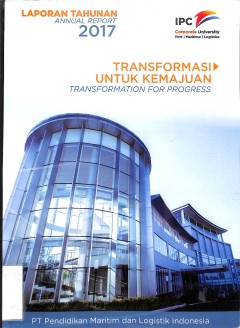
Laporan Tahunan 2017 : Transformasi Untuk Kemajuan
- Edisi
- Laporan Tahunan 2017
- ISBN/ISSN
- -
- Deskripsi Fisik
- 214p
- Judul Seri
- -
- No. Panggil
- IPC REP 2017 LAP l C.1
- Edisi
- Laporan Tahunan 2017
- ISBN/ISSN
- -
- Deskripsi Fisik
- 214p
- Judul Seri
- -
- No. Panggil
- IPC REP 2017 LAP l C.1

Indonesia Oil & Gas Report Includes 10-Year Forecasts To 2026
Falling production against rising demand will see Indonesia become a larger importer of crude oil, refined fuels and natural gas (in the form of LNG) over our 10-year forecast period. Notably, diminishing gas supplies and subsequent pressure to exports will turn Indonesia into a net LNG importer for the first time by 2021. Realisation of the government's ambitious downstream expansion plans cou…
- Edisi
- October 2017
- ISBN/ISSN
- 1748-4014
- Deskripsi Fisik
- 114P
- Judul Seri
- Part of BMI’s Industry Report & Forecasts Series
- No. Panggil
- TXT MG RES i

Unctad Trainfortrade Port training Proramme English-Speaking network "Modern …
- Edisi
- -
- ISBN/ISSN
- -
- Deskripsi Fisik
- 22 p., : illus : table : 30 cm
- Judul Seri
- -
- No. Panggil
- TD REP DIS u
- Edisi
- -
- ISBN/ISSN
- -
- Deskripsi Fisik
- 22 p., : illus : table : 30 cm
- Judul Seri
- -
- No. Panggil
- TD REP DIS u
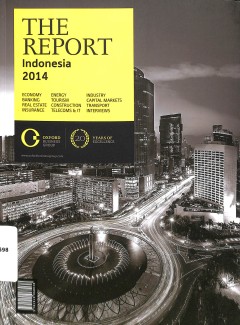
The report Indonesia 2014
On the cusp of 2014 national elections and the 2015 integration of the ASEAN Economic Community, Indonesia is poised to continue its rapid economic expansion. While the country’s natural resources are still plentiful, by channelling foreign direct investment into the right areas, the government is ensuring that true potential, in terms of value and manufacturing, is achieved. By inviting t…
- Edisi
- 2014 Ed.
- ISBN/ISSN
- 978-191-006-803-8
- Deskripsi Fisik
- 368 p., 33 cm; graphics; index; photo; table
- Judul Seri
- -
- No. Panggil
- 070.43598

Indonesia Petrochemicals Report Includes 5-Year Forecasts To 2021
Chandra Asri Petrochemical (CAP) remains the leader in investment in petrochemicals. CAP has set out plans to invest USD6bn in a number of projects over 2016-2021. CAP's capital outlay for 2017 was USD150mn focusing on ramping up production capacity on a number of petrochemical products, particularly butadiene, as well as its cracker facility. Indonesian chemicals output surged 10.1% y-o-y in 9…
- Edisi
- December 2017
- ISBN/ISSN
- 1749-2270
- Deskripsi Fisik
- 75P
- Judul Seri
- Part of BMI’s Industry Report & Forecasts Series
- No. Panggil
- TXT MG RES i

Iindonesia Freight Transort Report Includes 5-Year Forecasts to 2019
BMI View: In 2016 the air freight mode will see the most significant growth in Indonesia, as trade in Asia is set to rebalance after stalling in 2015 and key sectors such as the pharmaceutical market will see a boost in growth. In our medium-term forecast to 2019, BMI believes the rail and air freight modes will see higher growth than road freight transport, as a result of state and external in…
- Edisi
- October 2015
- ISBN/ISSN
- 1752-5861
- Deskripsi Fisik
- 59P
- Judul Seri
- INDONESIA FREIGHT TRANSPORT REPORT
- No. Panggil
- TXT MG RES f

Indonesia Mining Report Includes 10-year forecasts to 2027
Indonesia's mineral production growth will accelerate in the coming quarters, following the easing of the mineral ore export ban. Nevertheless, policy uncertainty, bureaucracy, resource nationalism and regulatory hurdles will increasingly lead to foreign miners divesting their assets and handing them over to locals over our forecast period from 2018-2027.
- Edisi
- March 2018
- ISBN/ISSN
- 1755-7828
- Deskripsi Fisik
- 57p
- Judul Seri
- Indonesia Mining Report
- No. Panggil
- TXT MG RES i

Indonesia Country Risk Report Includes 10-year forecasts to 2027
Indonesia's real GDP grew by 5.1% in 2017, which was in line with our estimate and we expect growth to pick up modestly to 5.3% in 2018 and 5.4% in 2019. An increase in election spending and an acceleration in private investment on the back of an improving business environment should be supportive of growth, but this will be partially offset by higher oil prices and rising political instability
- Edisi
- 2 March
- ISBN/ISSN
- 2057-9799
- Deskripsi Fisik
- 48P
- Judul Seri
- Indonesia Country Risk Report
- No. Panggil
- TXT MG MOK i

The transition to financial capitalism and its implications for financial rep…
There are two main alternative explanations in the literature for the patterns of financial reporting during the period of the British Industrial Revolution (BIR). Rob Bryer sees the new social relations of production in which manufacturing entrepreneurs strove to increase the productivity of wage-labour as leading to a distinct capitalist “calculative mentality”, focused on the return on …
- Edisi
- Vol. 21 No. 8, 2008
- ISBN/ISSN
- 1185-1209
- Deskripsi Fisik
- 25 p.
- Judul Seri
- Transition to financial capitalism
- No. Panggil
- ATC MG ARN t
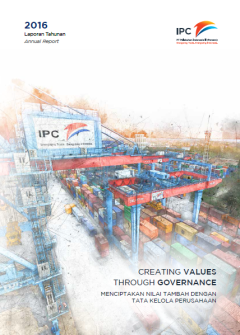
Annual report 2016 : Creating values through governance [Menciptakan nilai ta…
Melalui fase Fit in Infrastructure, Perseroan menyusun Corporate GCG Roadmap untuk lima tahun ke depan dan mengimplementasikannya secara menyeluruh demi terciptanya Good Corporate Citizenship yang komprehensif. Suksesnya implementasi fase ini terbukti berhasil mendorong keberhasilan perseroan untuk melalui masa-masa sulit. Ke depannya, Perseroan terus memperkuat komitmen terhadap implementasi k…
- Edisi
- Tahun 2016
- ISBN/ISSN
- -
- Deskripsi Fisik
- 856 p.,
- Judul Seri
- -
- No. Panggil
- IPC REP ANN a
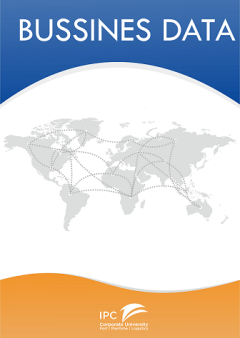
Indonesia shipping report Q4 2013 : includes 5-year forecasts to 2017
Reduction of Fuel Subsidies Will Lower Growth In Short Term A key development in June has prompted BMI to revise its economic outlook for Indonesia this year. On June 22 the government raised the prices of subsidised premium petrol and diesel by 44.4% and 22.2% respectively. This led to an inflation spike (the annual rate of inflation rose to 8.6% in July) and to a tightening of monetary policy…
- Edisi
- -
- ISBN/ISSN
- 2040-9745
- Deskripsi Fisik
- 112 p.
- Judul Seri
- Part of BMI’s Industry Report & Forecasts
- No. Panggil
- BD BMI i

Indonesia shipping report Q3 2015 : includes 5-year forcasts to 2019
With both economic growth and foreign trade activity gathering pace moderately in 2015, we expect activity levels at Indonesia's main ports to grow. But there will be leads and lags, with some short-term weaknesses in freight demand recovering later in the year. Growth will not be uniform. At the port of Tanjung Priok cargo handled will rise more rapidly than in 2014, with expansion in the 3-6%…
- Edisi
- -
- ISBN/ISSN
- 2040-9745
- Deskripsi Fisik
- 98 p.
- Judul Seri
- Part of BMI’s Industry Report & Forecasts
- No. Panggil
- BD BMI i
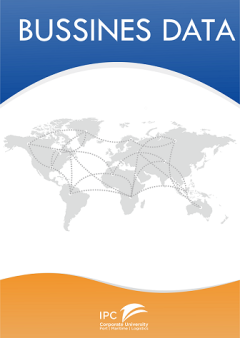
Indonesia shipping report Q3 2015 : includes 5-year forecasts to 2019
With both economic growth and foreign trade activity gathering pace moderately in 2015, we expect activity levels at Indonesia's main ports to grow. But there will be leads and lags, with some short-term weaknesses in freight demand recovering later in the year. Growth will not be uniform. At the port of Tanjung Priok cargo handled will rise more rapidly than in 2014, with expansion in the 3-6%…
- Edisi
- -
- ISBN/ISSN
- 2040-9745
- Deskripsi Fisik
- 98 p.
- Judul Seri
- Part of BMI’s Industry Report & Forecasts
- No. Panggil
- BD BMI i

Indonesia shipping report Q3 2013 : includes 5-year forecasts to 2017
Our outlook for the Indonesian economy remains unchanged since our last quarterly report. BMI continues to forecast GDP growth of 6.1% in 2013, rising to 6.4% in 2014. The big driver of this growth is domestic consumer spending, which represents around 55% of GDP. Coupled with good fundamentals and gradual improvements in the operating environment as a result of government reforms, this has giv…
- Edisi
- -
- ISBN/ISSN
- 2040-9745
- Deskripsi Fisik
- 150 p.
- Judul Seri
- Part of BMI’s Industry Report & Forecasts
- No. Panggil
- BD BMI i

Indonesia shipping report Q3 2009 Including 5-year industry forecasts
In 2009 BMI believes that throughput trends at Indonesia's ports will follow the pattern of the country's trade sector. We predict that both imports and exports will fall by 9.5 percent in 2009. A recovery is set to begin in 2010, with total trade forecast to increase by 9%. An average yearly growth of 10.2% between 2011 and 2013 is predicted.
- Edisi
- -
- ISBN/ISSN
- 2040-9745
- Deskripsi Fisik
- 95 p.
- Judul Seri
- Part of BMI’s Industry Report & Forecasts
- No. Panggil
- BD LO BMI i

Indonesia shipping report Q2 2015 : includes 5-year forecasts to 2019 part
We are expecting activity at Indonesia's main ports to be positive and broadly comparable to last year, with growth of cargo handled ranging roughly between 3% and 8%. Of particular interest to the bulk shipping sector is the fate of the government's existing ban on the export of unprocessed mineral ores. The Constitutional Court upheld the ban in December, but there have been some signs that t…
- Edisi
- -
- ISBN/ISSN
- 2040-9745
- Deskripsi Fisik
- 95 p.
- Judul Seri
- Part of BMI’s Industry Report & Forecasts
- No. Panggil
- BD BMI i

Indonesia shipping peport Q2 2015 : includes 5-year forecasts to 2019
We are expecting activity at Indonesia's main ports to be positive and broadly comparable to last year, with growth of cargo handled ranging roughly between 3% and 8%. Of particular interest to the bulk shipping sector is the fate of the government's existing ban on the export of unprocessed mineral ores. The Constitutional Court upheld the ban in December, but there have been some signs that t…
- Edisi
- -
- ISBN/ISSN
- 2040-9745
- Deskripsi Fisik
- 92 p.
- Judul Seri
- Part of BMI’s Industry Report & Forecasts
- No. Panggil
- BD BMI i

Indonesia shipping report Q2 2013 : includes 5-year forcasts to 2017
Since our last quarterly shipping report, we have become more optimistic about Indonesia's macroeconomic outlook in 2013. With the US, Europe, and China looking at economic rebounds of differing intensities, the external environment has become more favourable. After a tough year in 2012 the global mining industry is looking more upbeat, with key metal commodity prices likely to improve. While w…
- Edisi
- -
- ISBN/ISSN
- 2040-9745
- Deskripsi Fisik
- 158 p.
- Judul Seri
- Part of BMI’s Industry Report & Forecasts
- No. Panggil
- BD BMI i

Indonesia shipping report Q2 2012 : includes 5-year forecasts to 2016
Indonesia is growing strongly in 2012, despite the recessionary trends in the world economy. BMI believes expansion is driven by the healthy state of the country's large internal market, its solid banking system, and various other factors such as its diversified exports (commodities and manufactures). The economy remained dynamic in 2011, and in 2012 we expect it to continue to push ahead. This…
- Edisi
- -
- ISBN/ISSN
- 2040-9745
- Deskripsi Fisik
- 128 p.
- Judul Seri
- Part of BMI's Industry Report & Forecasts
- No. Panggil
- BD BMI i

Indonesia shipping report Q2 2009 : including 5-year industry forecasts
The shipping industry entered 2009 in a state of crisis. All shipping sectors had been hit hard, with the dry bulk sector struggling to recover from a plunge in November 2008 that took the Baltic Dry Index to a nine-year low. Rumours persisted that containers were being shipped for a little as US$200 and that the only thing keeping the liquid bulk sector afloat was that tankers were being used …
- Edisi
- -
- ISBN/ISSN
- 2040-9745
- Deskripsi Fisik
- 83 p.
- Judul Seri
- Part of BMI's Industry Report & Forecasts
- No. Panggil
- BD BMI i

Indonesia shipping report Q2 2009 : Including 5-year industry forecasts
The shipping industry entered 2009 in a state of crisis. All shipping sectors had been hit hard, with the dry bulk sector struggling to recover from a plunge in November 2008 that took the Baltic Dry Index to a nine-year low. Rumours persisted that containers were being shipped for a little as US$200 and that the only thing keeping the liquid bulk sector afloat was that tankers were being used …
- Edisi
- -
- ISBN/ISSN
- 2040-9745
- Deskripsi Fisik
- 83 p.
- Judul Seri
- Part of BMI's Industry Report & Forecasts
- No. Panggil
- BD BMI i

INDONESIA SHIPPING REPORT Q1 2012 INCLUDES 5-YEAR FORECASTS TO 2016
At the moment, Indonesia is one of the few economies showing capacity to buck the trend towards a global economic slowdown. The economy remained dynamic in 2011, and in 2012 we expect it to continue to push ahead. This is good news for the ports and shipping industry. While net exports may falter a little as global demand cools, domestic consumption and investment look resilient. BMI now foreca…
- Edisi
- -
- ISBN/ISSN
- 2040-9745
- Deskripsi Fisik
- 133 p.
- Judul Seri
- Part of BMI's Industry Report & Forecasts
- No. Panggil
- BD BMI i

Indonesia operational risk report Q3 2016 includes the BMI operational risk i…
Investors in Indonesia face a variety of challenges that hinder the business environment in the country. Chief among these risks are the restrictions on foreign direct investment (FDI), excessive red tape associated with trading and setting up a business, a poorly skilled labour market, a disjointed and highly variable logistics network and the threats to foreign workers and businesses from cri…
- Edisi
- -
- ISBN/ISSN
- 2055-8880
- Deskripsi Fisik
- 128 p.
- Judul Seri
- Part of BMI's Industry Report & Index
- No. Panggil
- BD BMI i

Indonesia operational risk report Q2 2016 : includes the BMI operational risk…
Investors in Indonesia face a variety of challenges that hinder the business environment in the country. Chief among these risks are the restrictions on foreign direct investment (FDI), excessive red tape associated with trading and setting up a business, a poorly skilled labour market, a disjointed and highly variable logistics network and the threats to foreign workers and businesses from cri…
- Edisi
- -
- ISBN/ISSN
- 2055-8880
- Deskripsi Fisik
- 134 p.
- Judul Seri
- Part of BMI's Industry Report & Index
- No. Panggil
- BD BMI i

Indonesia shipping report Q1 2016 : includes 5-year forecasts to 2019
Both of Indonesia's main ports are set to experience positive growth in 2016. Consumer demand and economic growth are set to bolster the country's shipping services, although the ongoing slowdown in China's economy could hold Indonesia back from maximising its potential over the next couple of years.
- Edisi
- -
- ISBN/ISSN
- 2040-9745
- Deskripsi Fisik
- 92 p.
- Judul Seri
- Part of BMI’s Industry Report & Forecasts
- No. Panggil
- BD BMI i

Indonesia shipping report Q1 2016 : includes 5-year forecasts to 2019
Both of Indonesia's main ports are set to experience positive growth in 2016. Consumer demand and economic growth are set to bolster the country's shipping services, although the ongoing slowdown in China's economy could hold Indonesia back from maximising its potential over the next couple of years.
- Edisi
- -
- ISBN/ISSN
- 2040-9745
- Deskripsi Fisik
- 92 p.
- Judul Seri
- Part of BMI’s Industry Report & Forecasts
- No. Panggil
- BD BMI i

Indonesia shipping report Q1 2016 : includes 5-year forecasts to 2019
Both of Indonesia's main ports are set to experience positive growth in 2016. Consumer demand and economic growth are set to bolster the country's shipping services, although the ongoing slowdown in China's economy could hold Indonesia back from maximising its potential over the next couple of years.
- Edisi
- -
- ISBN/ISSN
- -
- Deskripsi Fisik
- 92 p.
- Judul Seri
- Part of BMI’s Industry Report & Forecasts
- No. Panggil
- BD BMI i

Indonesia shipping report Q1 2015 : includes 5-year forecasts to 2018
Our shipping and ports forecast for 2015 shows growth rates picking up pace slightly at the port of Tanjung Priok, while they will decelerate a little at the smaller facility at Palembang. This reflects the slightly mixed freight demand picture as the Indonesian economy is set to slow marginally, while foreign trade picks up pace compared to 2014. Over the medium- to long-term, we continue to b…
- Edisi
- -
- ISBN/ISSN
- 2040-9745
- Deskripsi Fisik
- 116 p.
- Judul Seri
- Part of BMI’s Industry Report & Forecasts
- No. Panggil
- BD BMI i

Indonesia freight transport report Q4 2015 : includes 5-year forecasts to 2019
Rail and air freight growth will be higher than road freight growth in 2015 as state investment in these sectors is ramped up and poor road infrastructure continues to hamper competitiveness on the roads. Economic integration with the ASEAN network will increase both import and export levels, which will impact favourably on the freight industry in the medium term.
- Edisi
- -
- ISBN/ISSN
- 1752-5861
- Deskripsi Fisik
- 58 p.
- Judul Seri
- Part of BMI’s Industry Report & Forecasts
- No. Panggil
- BD BMI i

Indonesia shipping report Q4 2015 : includes 5-year forcasts to 2019
In 2015, we anticipate healthy growth for both of Indonesia's two main ports as the contractions of recent years become a thing of the past. Slightly neutering growth is the fact that key trade partner China is set to experience a continuing slowdown in growth, but consumer demand is set to grow at a healthy level over our forecast period and beyond.
- Edisi
- -
- ISBN/ISSN
- 2040-9745
- Deskripsi Fisik
- 101 p.
- Judul Seri
- Part of BMI’s Industry Report & Forecasts
- No. Panggil
- BD BMI i

Indonesia shipping report Q4 2015 : includes 5-year forecasts to 2019
In 2015, we anticipate healthy growth for both of Indonesia's two main ports as the contractions of recent years become a thing of the past. Slightly neutering growth is the fact that key trade partner China is set to experience a continuing slowdown in growth, but consumer demand is set to grow at a healthy level over our forecast period and beyond.
- Edisi
- -
- ISBN/ISSN
- 2040-9745
- Deskripsi Fisik
- 101 p.
- Judul Seri
- Part of BMI’s Industry Report & Forecasts
- No. Panggil
- BD BMI i

Indonesia shipping report Q3 2012 : includes 5-year forecasts to 2016
We have trimmed our growth forecasts for Indonesia in 2012 and 2013, but only marginally so. BMI's view is that the slowdown in the global economy, and in Chinese growth which will for the first time in the last decade come in at under 8%, will have a knock-on effect on Indonesia. On the other hand, the country's domestic economy is in fairly rude health, with consumer spending looking solid an…
- Edisi
- -
- ISBN/ISSN
- 2040-9745
- Deskripsi Fisik
- 134 p.
- Judul Seri
- Part of BMI's Industry Report & Forecasts
- No. Panggil
- BD BMI i
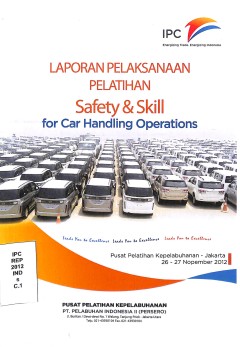
Laporan pelaksanaan pelatihan safety & skill for car handling operation : Pus…
- Edisi
- -
- ISBN/ISSN
- -
- Deskripsi Fisik
- 30 cm
- Judul Seri
- Laporan Pelaksanaan Pelatihan
- No. Panggil
- IPC REP 2012 IND s
- Edisi
- -
- ISBN/ISSN
- -
- Deskripsi Fisik
- 30 cm
- Judul Seri
- Laporan Pelaksanaan Pelatihan
- No. Panggil
- IPC REP 2012 IND s
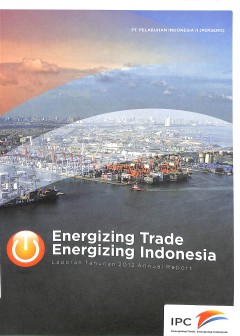
Energizing Trade. Energizing Indonesia : Laporan tahunan 2012 annual report
Buku ini mencakup Laporan pada tahun 2012 yang meliputi 1. sekilas perusahaan dimana mencakup visi dan nilai perusahaan, jejak langkah, Bagian alur oprasional, bidang usaha, wilayah kerja dan pelabuhan, ikhtisar keuangan, peristiwa penting tahun 2012, anak perusahaan, Penghargaan dan sertifikasi 2. Laporan manajemen. Laporan manajemen ini berisi Laporan komisaris utama dan laporan direktur …
- Edisi
- -
- ISBN/ISSN
- -
- Deskripsi Fisik
- 390 hlm., 33 cm
- Judul Seri
- -
- No. Panggil
- IPC REP IND e
 Karya Umum
Karya Umum  Filsafat
Filsafat  Agama
Agama  Ilmu-ilmu Sosial
Ilmu-ilmu Sosial  Bahasa
Bahasa  Ilmu-ilmu Murni
Ilmu-ilmu Murni  Ilmu-ilmu Terapan
Ilmu-ilmu Terapan  Kesenian, Hiburan, dan Olahraga
Kesenian, Hiburan, dan Olahraga  Kesusastraan
Kesusastraan  Geografi dan Sejarah
Geografi dan Sejarah